Welcome to the fifth in our Boundless Space storytelling series, which introduces just a few of the astonishing artists who are contributing work to the upcoming Boundless Space: The Possibilities of Burning Man online auction. A diverse and delightful collection of work by 180 artists will go on auction. We’re inviting YOU and the world to peruse the richly illustrated online catalogue — which is now live! Online bidding will be open September 30 to October 8, 2021. Proceeds from the Boundless Space auction will support participating artists and Burning Man Project.
Meet three painters, each with very different life experiences and practices, but unified by their poetic use of script—be it tagging, Arabic calligraphy, or the endless knot. Each script expresses a political reality: Cope2 shares raw stories of life in the Bronx; Akil Ahmad sings of the perils of migration; and Jakob Bokulich ponders how art can bring about positive change.
Cope2
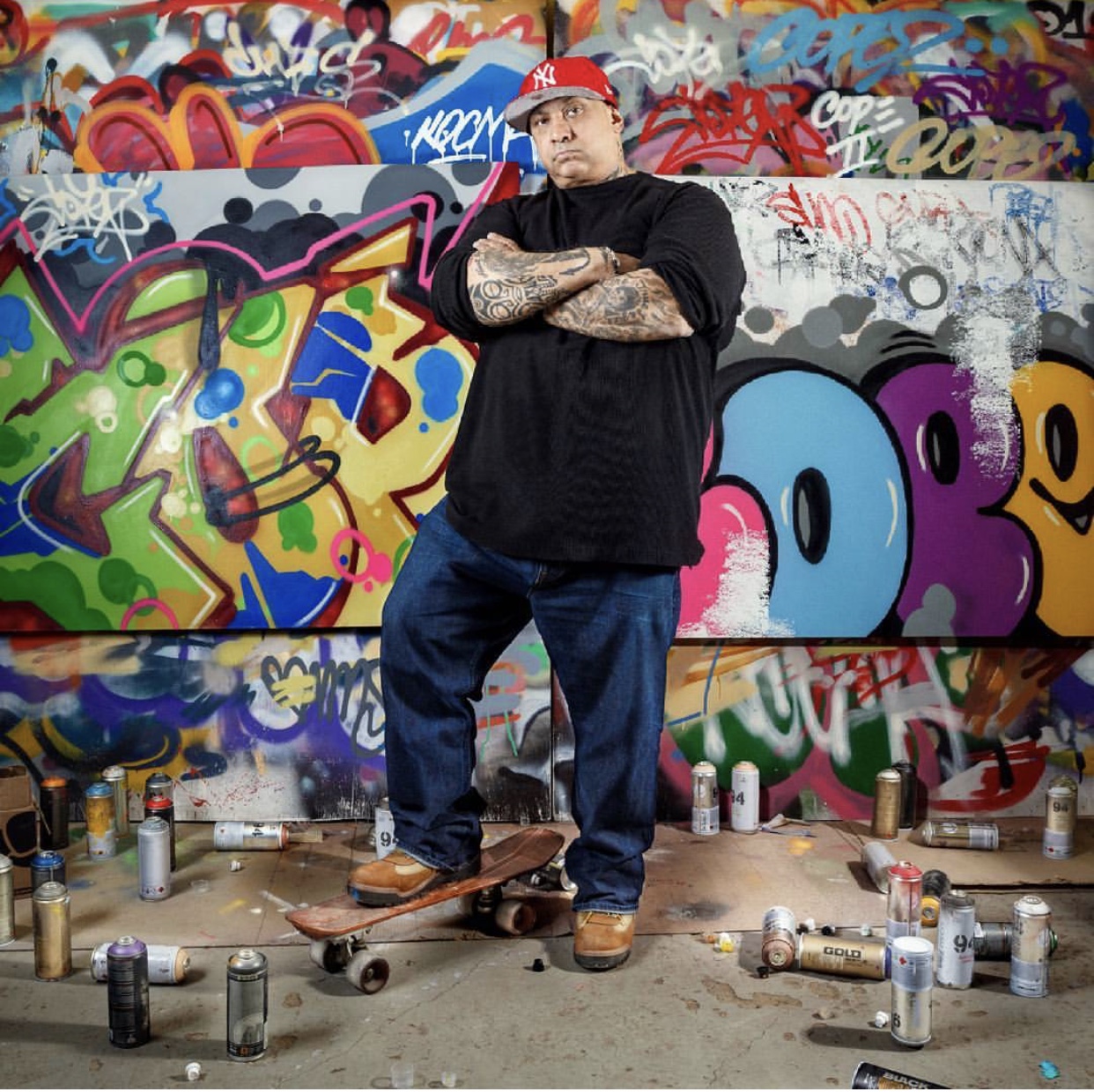
Prolific graffiti artist Cope2 shares his story. “I started in the subway cars in the early 80s,” he says. “Being Puerto Rican, Latino in the South Bronx growing up with my pops at work, my mom was on welfare. You know, we didn’t have much and just hanging on the block with the local kids and playing stickball, we would make go-karts and play in abandoned buildings. We were like, ‘Yo, let’s go take a train ride.’ It’d be like four or five, six of us, Spanish, Black, white kids, whatever, it was all colors. And we would just look at the graffiti. The energy of it drew me in and I wanted to paint trains.
“So, I started to paint subway cars,” he continues, “and then met other graffiti artists in the neighborhood. Learned how to get [in] the train yards and to do my name.” Then Cope2 moved onto the neighborhood walls. “I would just go inside and ask the owner, ‘Hey, can I do my name on your wall with nice colors?’ And they were all for it because they would rather have something colorful on the wall than it being all bombed up. It’s like we took the pieces from the subway cars and started adding them on the walls in the street.”
When asked about his move from subway cars and walls to canvas:
“I always watched other people before me doing art on canvas—Futura, DONDI, Daze, Crash, Rammellzee. Wow, these dudes, they were doing subway cars before me. I always watched guys before me and it inspired me.”
He moved to bars and clubs and the little spaces in the little galleries in the corners.
“Connecting with people and people seeing my ambition and my energy. And they started to guide me. I said, ‘How can I switch it and flip it a little where the art world would like it and other people will like it but keep my essence at the same time?’
“I was always watching Basquiat. He was one of my idols,” Cope2 says. “I watched the way he did his own style, how he would put layers of paint and acrylic and then write stories and then layers and painting and draw something. I said, ‘Wait a minute. It’s that right there.’ So I started to do layers of paint, but doing my tags, my piecing, my bubble letters inside, and then doing some layers again. And before you know it, it took off. You know, I started to get a lot of people were loving it. They were loving it because I was able to keep my graffiti, my authenticity in the painting, as well.”

Cope2 contributed “Stay Focused,” one of his signature layered pieces to Boundless Space. Today his canvas work is shown in galleries around the world. But Cope2 still paints walls and trains. “I still do burn in the street, you know? Right now, I’ll get some cans. I’ll go to the Bronx. A lot of owners let me paint any time I want. It’s the energy. It’s, like, in your soul, in your blood.”
Akil Ahmad
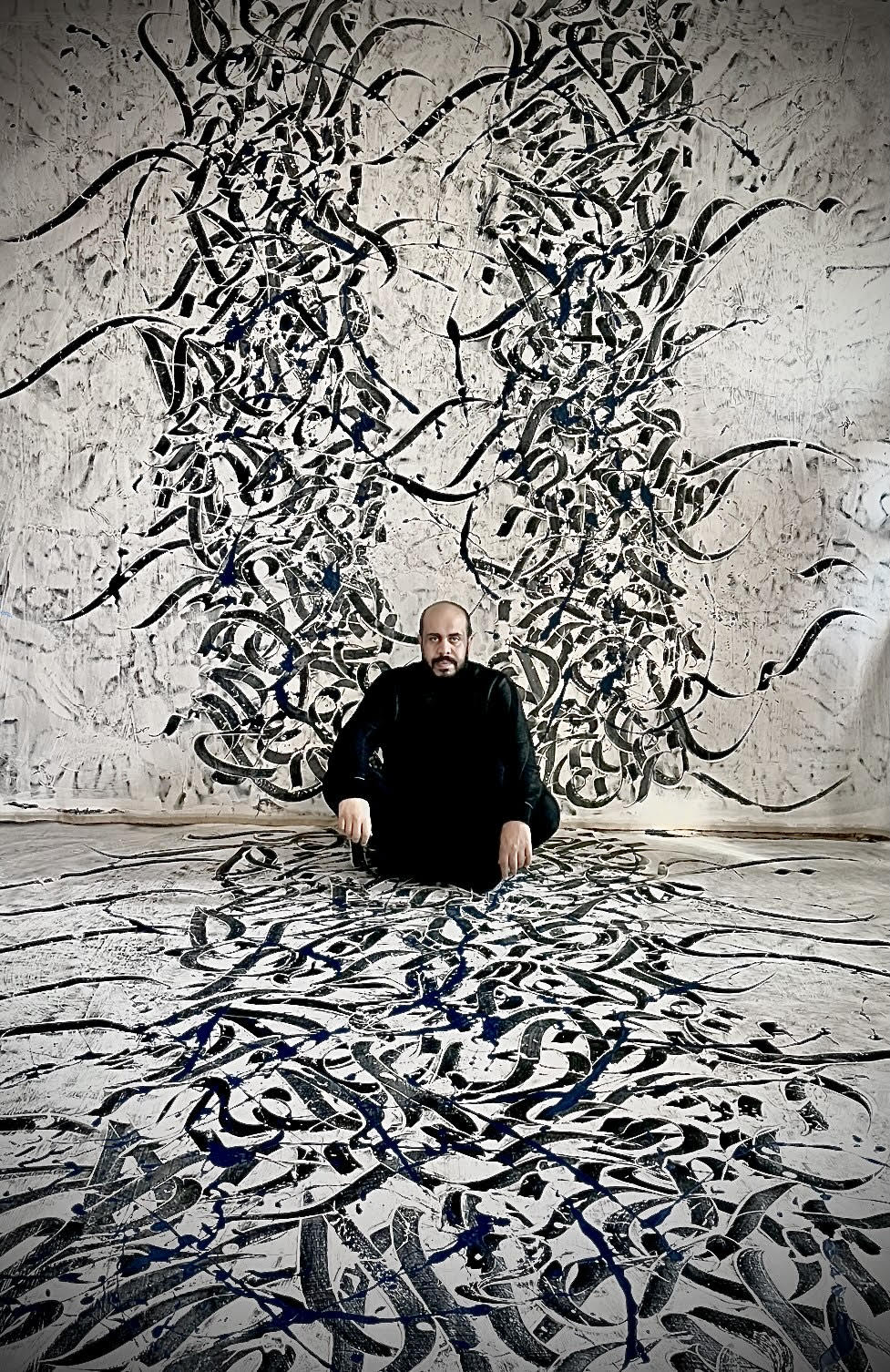
“When I was 10,” Akil Ahmad says, “I started learning Arabic calligraphy. I used to go with my father to the market and I brought calligraphy tools. I kept my eyes on store signages (Aramat in Arabic) and I would try to replicate them.
“When I first started, I would listen to music, and I felt a strong connection between the lines I was painting and the notes of the music… Expressing what I was hearing in calligraphic art. Auditory patterns turned into a visual pattern. It is my attempt to draw the ecstasy of pure music.”
Ahmad entered the College of Fine Arts in Aleppo, Syria. After graduating he went to Beirut and worked on his second collection. “The first group of my work was lost to war.”
Ahmed has contributed a piece titled “Drowning” to the Boundless Space auction. He speaks of painting words that are the visual calligraphic representation of music. In this work, those musical words speak a poem his good friend Ghiath Al-Madhoun wrote:
Why do migrants drown, and after they breathe their last breath they float on the face of the water?
Why doesn’t the opposite happen?
Why does a person not float when he is alive and drown when he dies?

Ahmed explains, “Many of the Syrian people drowned in this sea, trying to reach the shore for safety. When I read this poem it took me to a faraway place, I decided that this place would be my painting.”
Jakob Bokulich
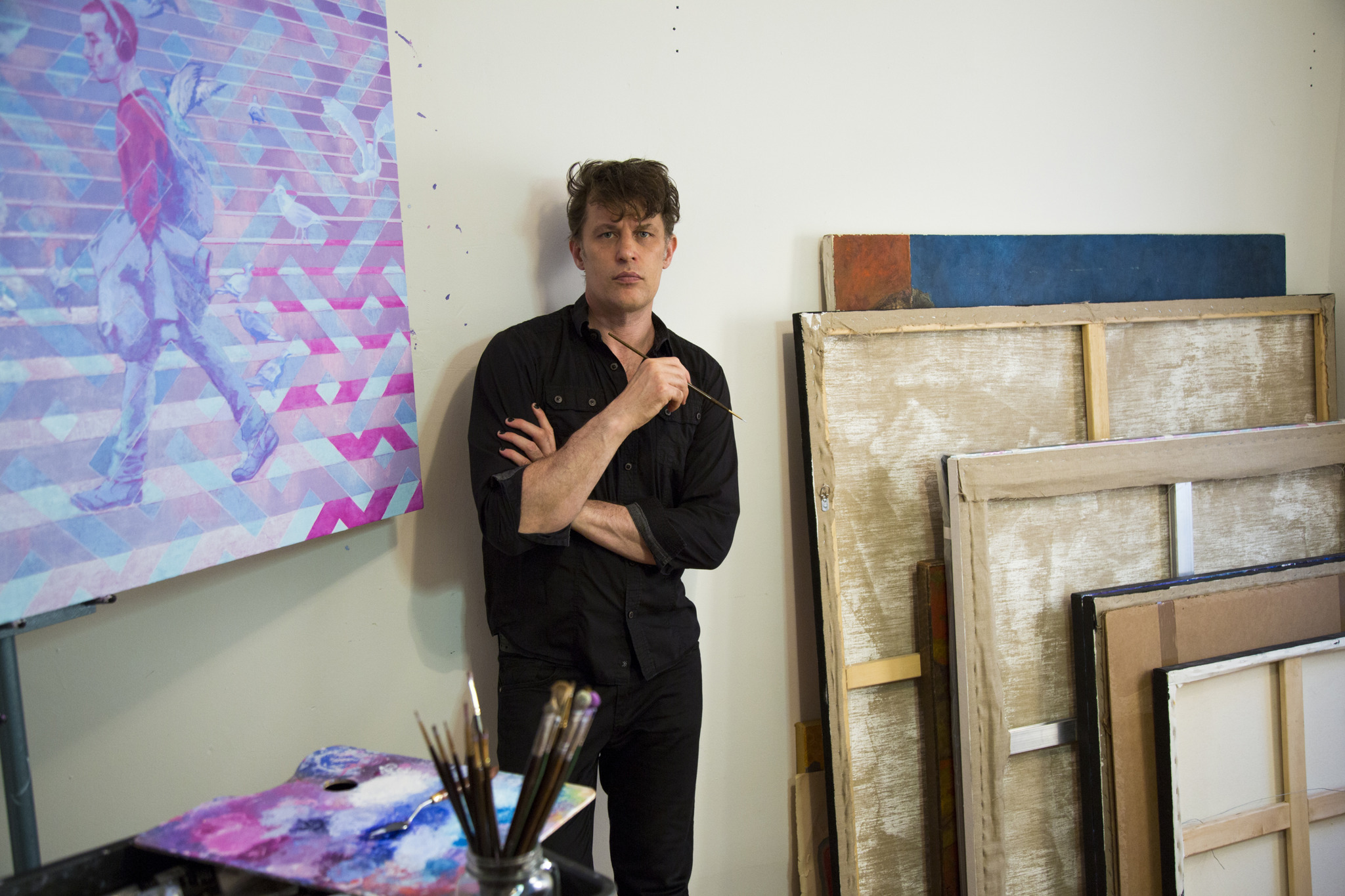
“I’ve been mostly in monastic mode in the studio,” says Jakob Bokulich, “Just diving into my brain. This year and a half of the pandemic was definitely a time where things slowed down. It gave me time to reflect.”
Currently, Bokulich is working on an “homage, of sorts” to Edvard Munch’s “Scream,” which, he says, “is like Mother Nature screaming and is my personal response to our current times of climate change, fires, hurricanes, etc.
“Do I have answers?” he asks. “I’m an artist and I work with the tools that I have. I have creativity; there’s something magical and revolutionary in that. I follow creativity and keep opening my eyes and, by doing so, open other people’s eyes.
“I was always drawing. A big, pivotal point for me was after a house fire. I was 12 and from a big, Catholic family with eight kids. We were homeless for about a year, staying with friends. For a little while, my brother and I stayed with an artist; he was a painter. And I remember going to his studio, a shed in his back in his backyard and I was like, ‘This. This is what I want to do. This is the life I want to live.’”
He reflects, “What’s the intention? What am I doing this for? You know, am I just reacting or am I trying to be part of hopefully a positive change?”
Bokulich focuses on “work that has intention and meaning. I started to question what I was doing, and I saw this show of Joseph Beuys, which rocked my world. It really made me question, ‘What is art? What am I doing this for? Am I just making pretty pictures for rich people to hang above their couches?’ I started exploring. Burning [Man] was a huge opportunity. To do a sculpture that was an abstract embodiment of what I thought was beautiful and interesting. And then burn it, blow it up. Doing that without having to think, ‘Is this going to sell?’ That was really freeing. From there, there’s no going back.”
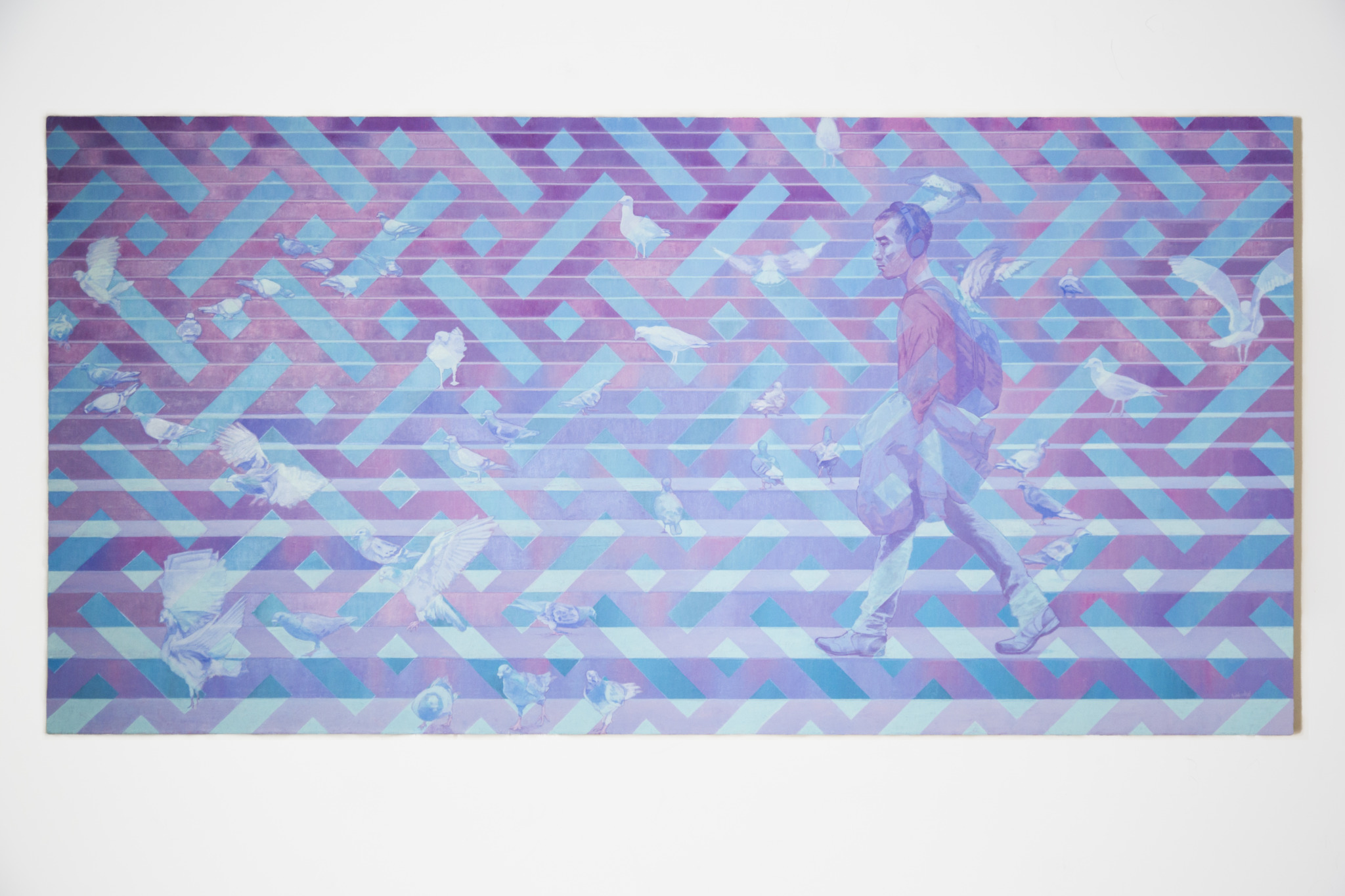
Cover image features detail from “21 [Andy Akiho]” by Jakob Bokulich

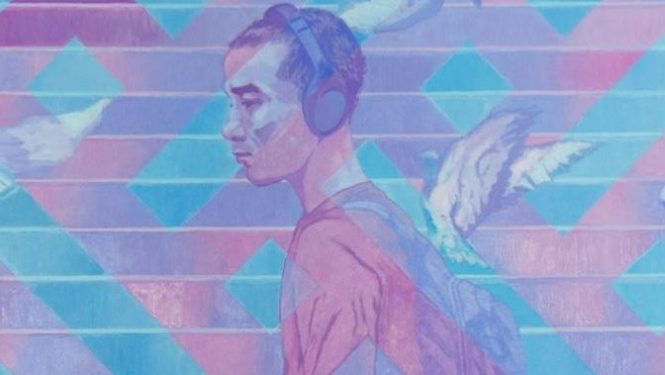
These are beautiful and I love the accompanying stories. It might be wealthy people who hang the pieces above their couches, but still – thanks for sharing this moment with the rest of us. Thanks to the artists for donating their heartfelt and carefully crafted pieces to the auction.
Report comment
check it out
Report comment
Comments are closed.